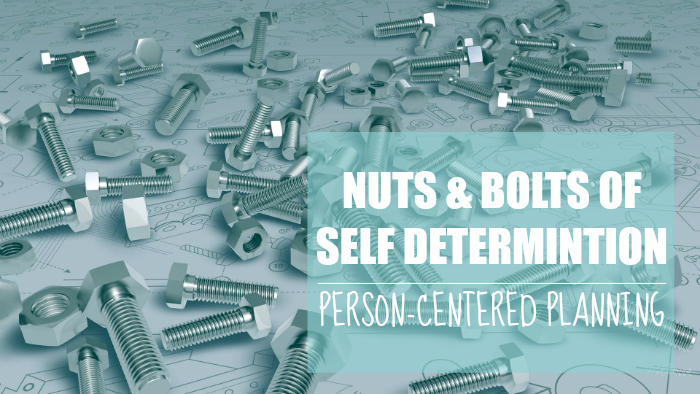 One of the most salient changes from the traditional model of Regional Center services to the new Self Determination Program is the move to Person-Centered Planning (PCP).
One of the most salient changes from the traditional model of Regional Center services to the new Self Determination Program is the move to Person-Centered Planning (PCP).
PCP is a planning process that ideally befits the 5 principles of self-determination:
- freedom – having a choice
- authority – being in control
- support – ability to arrange resources and personnel
- responsibility – giving back to the community
- confirmation – of your role in your own life
In this series delving into the nuts and bolts of the Self Determination Program, we’ll start with this game-changing process.
What is Person-Centered Planning (PCP)?
Person-centered planning is a process, directed by the family or the individual with long term care needs, intended to identify the strengths, capacities, preferences, needs and desired outcomes of the individual… The individual identifies planning golas to achieve these personal outcomes in collaboration with those that the individual has identified, including medical and professional staff. Identified outcomes and training supports, therapies, treatments the individual will receive will become part of the plan of care.
– Definition, Center of Medicare and Medicaid Services
PCP, in essence, uses your your strengths, hopes, and preferences to plan your life with input and support of those who care about you.
Why Person-Centered Planning (PCP)?
It’s simple: every individual has strengths, can express preferences, and make choices. Through the person-centered planning, every individual contributes to his or her community and has the ability to choose how supports and services enable him or her to meaningfully participate and contribute, thereby maximizing independence, creating community connections, and working together towards achieving outcomes.
Furthermore, with the inclusion of allies and supporters of your own choosing, an individual’s cultural background is recognized and valued in the person-centered process.
How does Person-Centered Planning (PCP) work?
First comes the pre-planning: Before the first Person-Centered Planning meeting, you, a spokesperson (if needed), select friends and family members, independent facilitator, and mental health personnel meet to determine what will be discussed in your meeting, who will be invited, where and when the meeting with take place, as well as logistics for the meeting (augmentative communication, assistive technology, visual supports, etc.)
PCP Meeting: During the meeting, you, along with all your invited allies and supporters will discuss a whole host of topics that will help determine what you would like to do you in your future. Topics such as your likes and dislikes, barriers you’ve encountered in your life, what community activities you’d want to become involved with, what is your typical day like, how you can improve each day, what you’d like to change and what makes sense for you. Since PCP meetings will occur at least once a year (but as often as needed), your PCP plan will always be current and can change whenever your life, likes and dislikes, and circumstances change.
What’s next: Using the real life outcomes set forth in your Person-Centered Planning, your IPP (Individual Program Plan) team will develop your IPP goals. By doing so, your IPP team can capitalize on age-appropriate and culturally competent resources that are in your community, and the outcomes and goals will be based on your strengths, needs, interests, and connection to your community.
Click here to see all Nuts and Bolts of Self Determination blog posts.
For the latest about the Self Determination Program and in-depth explanations of its components, please subscribe to our email updates to stay apprised of the latest news.
If you have questions about this or any other content on this site, please contact us.
January 22, 2015


